Meet Dogor, an 18,000-year-old pup found buried inside a lump of frozen ice ground near the Indigirka River, north-east of Yakutsk, Russia. Due to the puppy’s full-body, thick hair, muzzle, and even whiskers and eyelashes being buried in ‘permafrost,’ which is ground that remains completely frozen, it has come out well preserved
Scientists managed to deduce that the dog was less than two months old when it died. The pup was so well preserved that researchers were able to sequence the animal’s DNA using a piece of its rib bone. The results showed that Dogor the pup was a male, but the team can’t really tell whether the ‘amazingly well-preserved’ creature is a dog or a wolf.
More info: Centre for Palaeogenetics
Scientists are still unsure whether the well-preserved canine is a dog or a wolf
Love Dalén, 44, and his colleague Dave Stanton, 34, who are both researchers from Sweden, believe this could be the earliest confirmed dog. If this is true, then it could be incredibly valuable when it comes to learning about the domestication of the wolves.
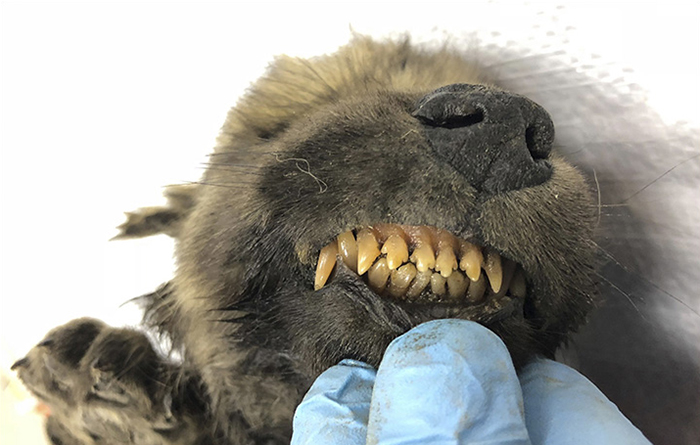
Image credits: Sergey Fedorov
“It was amazingly well preserved even before they cleaned it up. [When we found it] we didn’t know how old it was. They said they found it in the permafrost but it happens that things get frozen in there that are only a few hundred years old or even a few decades,” Love Dalén said.
The discovery could be crucial in learning more regarding the domestication of wolves
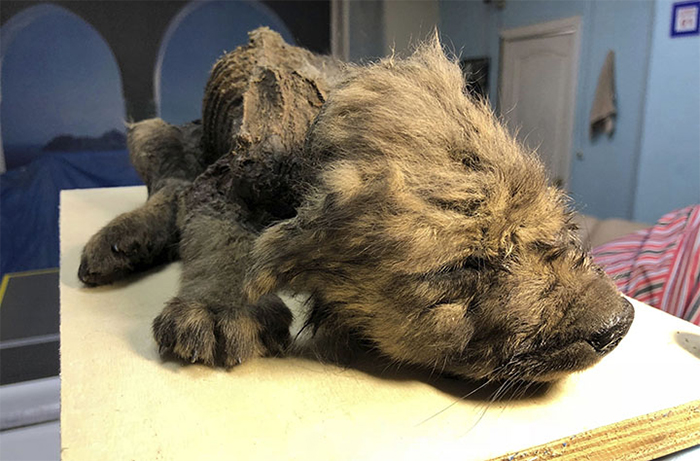
Image credits: Sergey Fedorov
“We were excited about it but we had a healthy dose of skepticism until we radiocarbon-dated it. Obviously, when we got the results that it was 18,000 years old, that changes everything. When we got that result, it was amazing. 18,000 years ago is an interesting time period where we think a lot of stuff is happening with both wolves and dogs genetically.
We cannot separate it from a modern wolf, Pleistocene [Ice Age] wolf or dog. One reason why it might be difficult to say is because this one is right there at the divergence time. So it could be a very early modern wolf or very early dog or a late Pleistocene wolf,” Love Dalén, who is a professor of evolutionary genetics, added.
The canine was well preserved due to the permafrost (frozen ground)
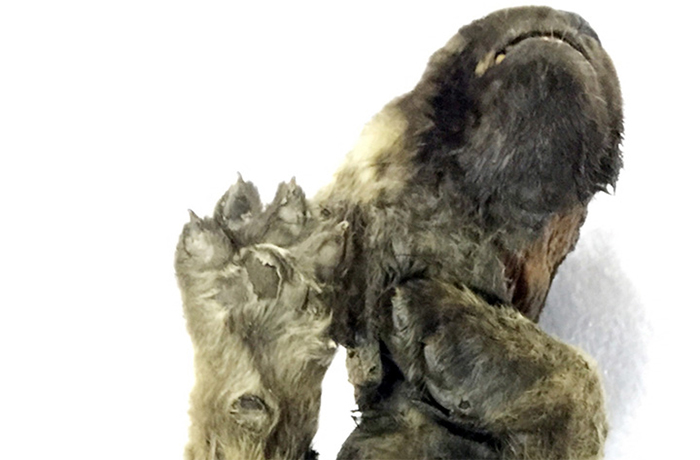
Image credits: Sergey Fedorov
The puppy was found in a remote and frozen part of north-east Siberia which still remains in Russia. According to Dave Stanton, the dog was so well preserved because it was found in a tunnel that was dug into the permafrost. This is especially exciting for scientists as it “might be able to contribute to something that’s been quite a big debate in the field for a long time.”
Russian scientists named the prehistoric puppy Dogor, a pun on ‘dog or wolf’
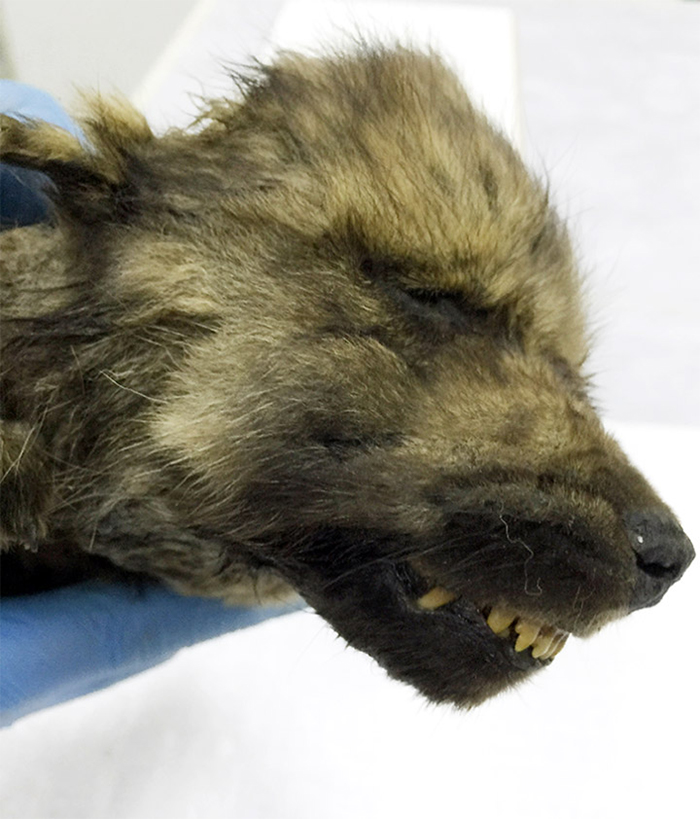
Image credits: Sergey Fedorov
The Swedish Centre for Palaeogenetics announced on their Twitter account: “Genome analyses show it’s a male. So we asked our Russian colleagues to name it… Thus, the name of the puppy is Dogor! Dogor is a Yakutian word for “friend”, which seems very suitable.”
They are now waiting for more tests results
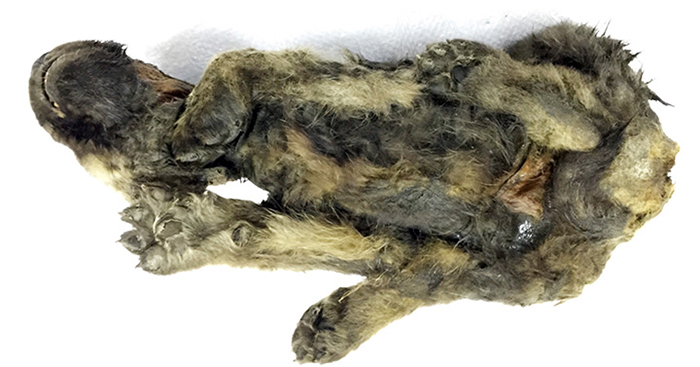
Image credits: Sergey Fedorov
Dr. Sergey Fedorov, an ancient canine expert from the North-Eastern Federal University said: “The center has Europe’s largest DNA bank of all canines from around the globe, yet in this case, they could not identify it from the first try. This is intriguing. What if it’s a dog? We can’t wait to get results from further tests.” Referring to the frozen puppy, the scientist said that it was “amazing… to see, touch and feel the history of Earth.”
“Just imagine, this puppy has been lying underground in the same pose and condition for 18,000 years”
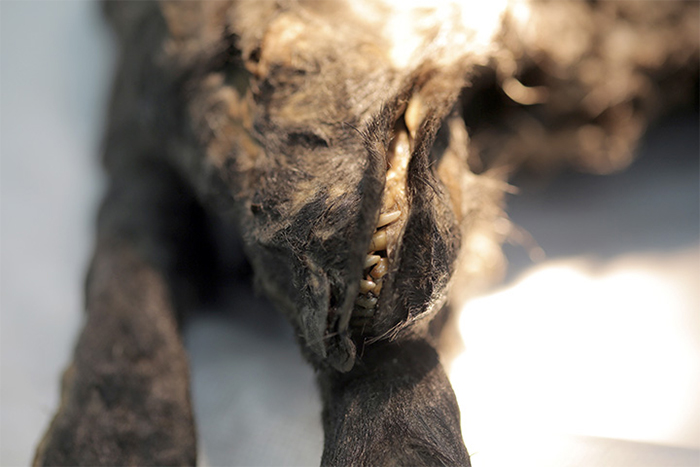
Image credits: Sergey Fedorov
“Just imagine, this puppy has been lying underground in the same pose and condition for 18,000 years without being disturbed at all. I really carefully removed the dirt and other debris stuck to its body step by step, revealing a wonderful condition fur which is extremely rare for animals of that time period. The only negative was that the part of the spine was exposed, baring its ribs,” the Russian researcher commented.










